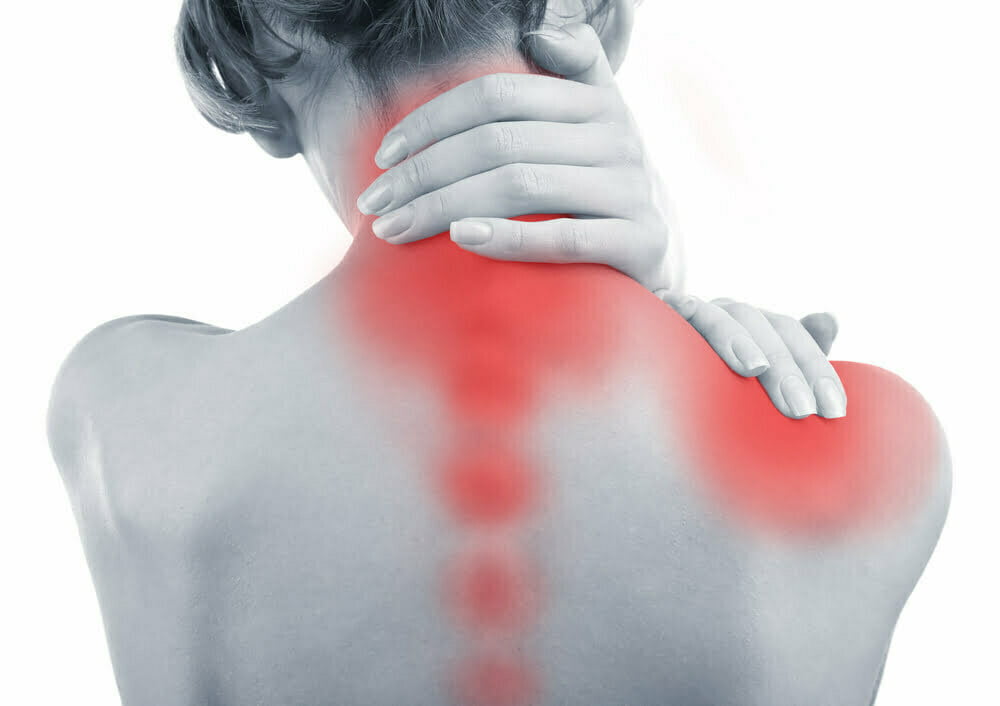When your neck and shoulders are tight with pain, it can be difficult to pinpoint what’s causing the discomfort. It’s frustrating living with sore or stiff muscles every day. Most neck pains and shoulder pains derive from issues with the upper trapezius in the body. The upper trapezius muscles are made up of complex structures that can contribute to tension and pain in one or more areas.
What Is the Trapezius?
The trapezius muscle is made up of three components that roughly cover most of the upper back area.
- Upper Trapezius: The upper trapezius starts at the base of the neck and extends across the tops of your shoulders. It helps you lift your arms, rotate, extend, turn and tilt your neck/head, and shrug your shoulders.
- Middle Trapezius: The middle trapezius muscle sits below the upper trapezius and goes across the shoulders. The middle trap allows you to pull your shoulders back and extends your arms behind you. The middle trapezius also helps stabilize your shoulders when you need to move your arms.
- Lower Trapezius: The lower trapezius begins around the shoulder blades and comes down to a V-shape in the middle of your back. The lower trap can help un-shrug your shoulders and stabilize your spine during twisting or bending motions.
Those who work jobs or spend time behind a computer monitor have experienced trapezius muscle pain from hunched shoulders. This can shorten the upper trap, which puts the middle and lower trapezius in an elongated position, making it hard for them to work properly.
Repetitive overhead motions can lead to muscle fatigue in your trapezius; you’d be using the middle and lower traps less, which means that your upper trapezius will need to use more effort. As a result, the upper trapezius will adapt by shortening to create a passive mechanism to stabilize your shoulders. This can create poor posture and decreased use of the middle and lower trapezius.
Tightness and pain can develop as the muscles begin to grow weak. It can also contribute to the impingement of surrounding structures, which may result in further complications.
Causes
The most common causes of trapezius pain include:
- Soft tissue injury
- Acute trauma
- Impingement
- Repeated motions, specifically at work
- Bursitis
Symptoms
You’ll know when an injury to the trapezius muscle has occurred by the following symptoms:
- Limited mobility
- Decreased range of motion
- Muscle weakness
- Neck and shoulder pain/stiffness
- Pain in between the shoulder blades
- Swelling, bruising, or tenderness
- Trapezius muscle pain
- Tension headaches
How Do I Treat Trapezius Muscle Pain?
There are helpful treatment options available that your wellness professional may recommend, such as:
- Acupuncture: Reduce pain and tightness in the trapezius with an acupuncture appointment.
- Massage Therapy: Massage therapy can increase flexibility and relax tightened trapezius muscles.
- Rest: Resting your traps can help them heal, especially if they have been strained or torn. While you rest, avoid lifting your arms or moving your shoulders, and drink enough water to keep your muscles hydrated.
How Do I Take Care of My Trapezius Muscles?
The best way to avoid or relieve pain is to keep your trapezius muscles strong. The best way to take care of your traps is by doing the following:
- Exercise: You can perform different shoulder stretches or trapezius exercises that will help strengthen them, improve your range of motion, and relax any tension in your neck or shoulders. Stick to gentle exercises, such as yoga or Pilates to keep your traps strong and flexible.
- Warm Up: Take some time to warm up before an exercise by stretching. A proper stretch before you do any sort of physical activity is a good way to avoid injury and keep your muscles flexible.
- Keep Healthy: If you maintain a healthy body weight, you will lessen the risk of muscle strain.
Are your trapezius trigger points causing unbearable pain in your neck and shoulders? If the trapezius pain isn’t improving, it’s time to do something about it. Book an appointment with Fit4Life today to get the best treatment options for your shoulders and neck.

